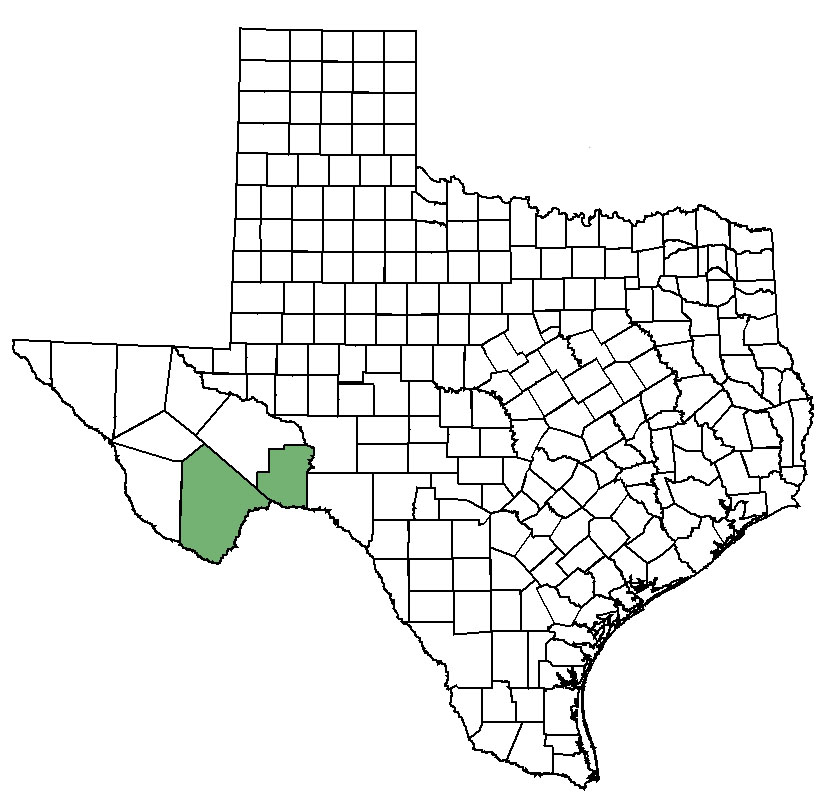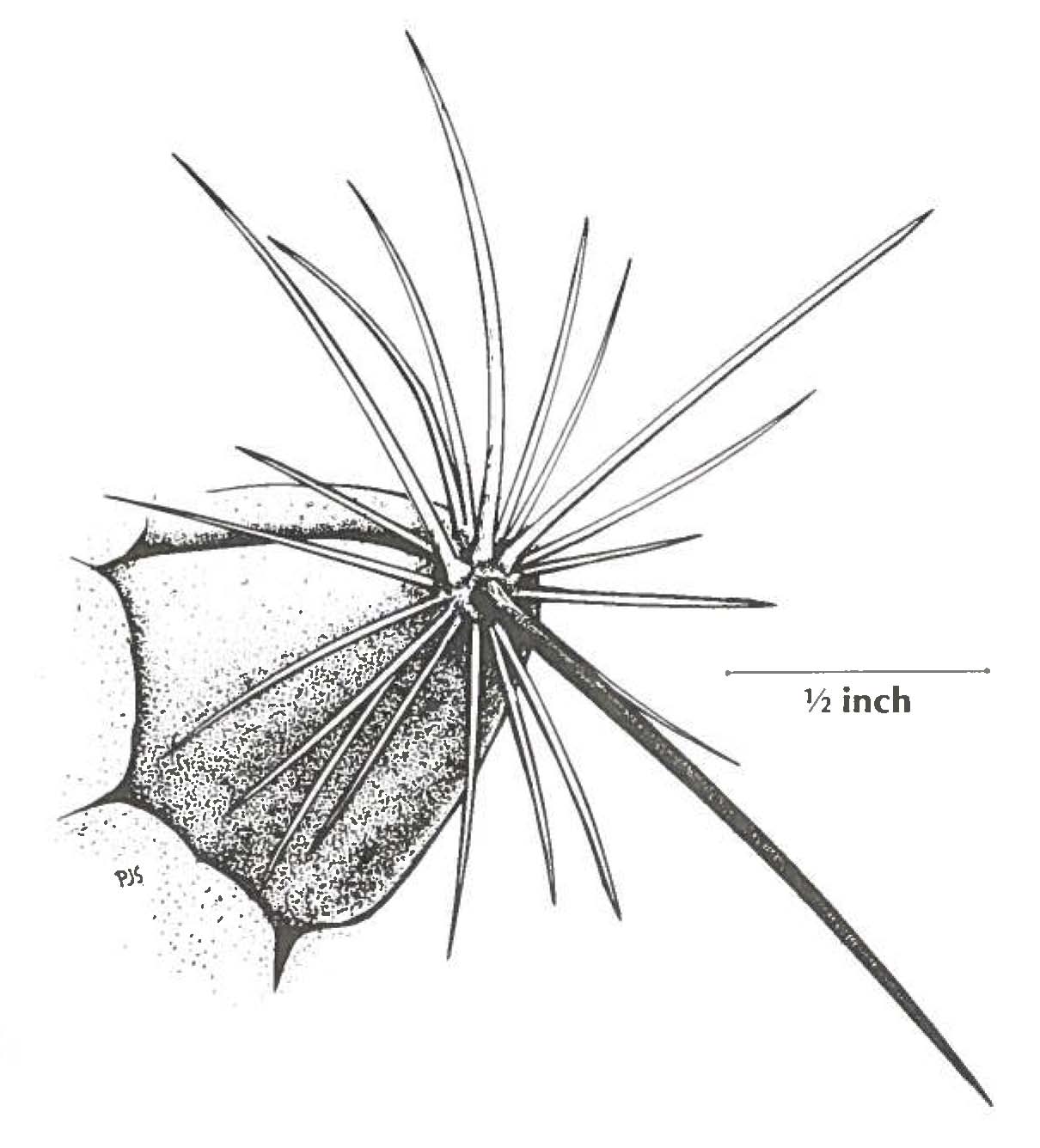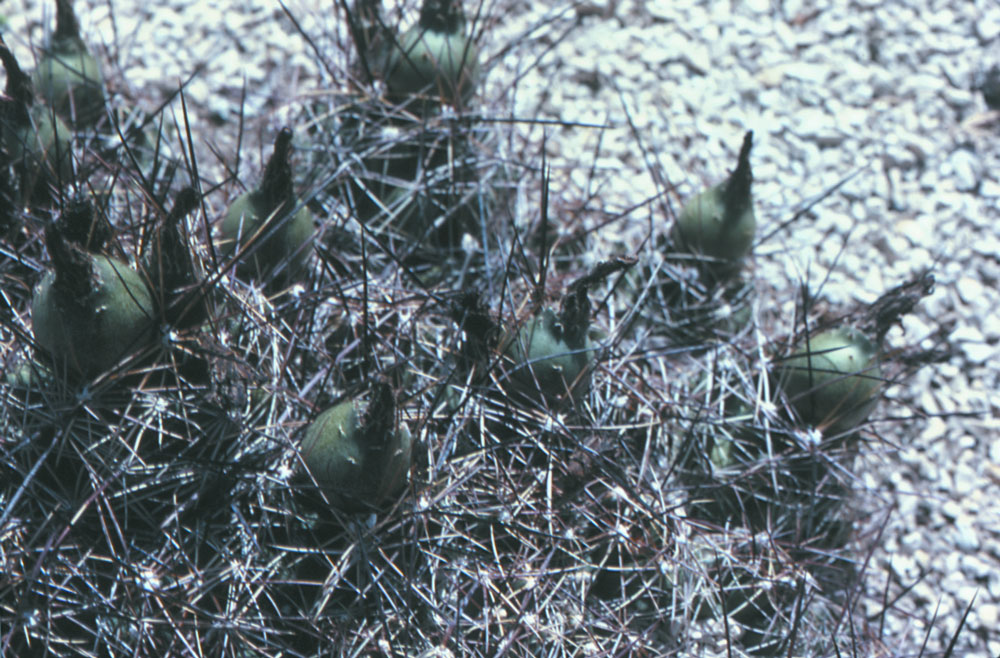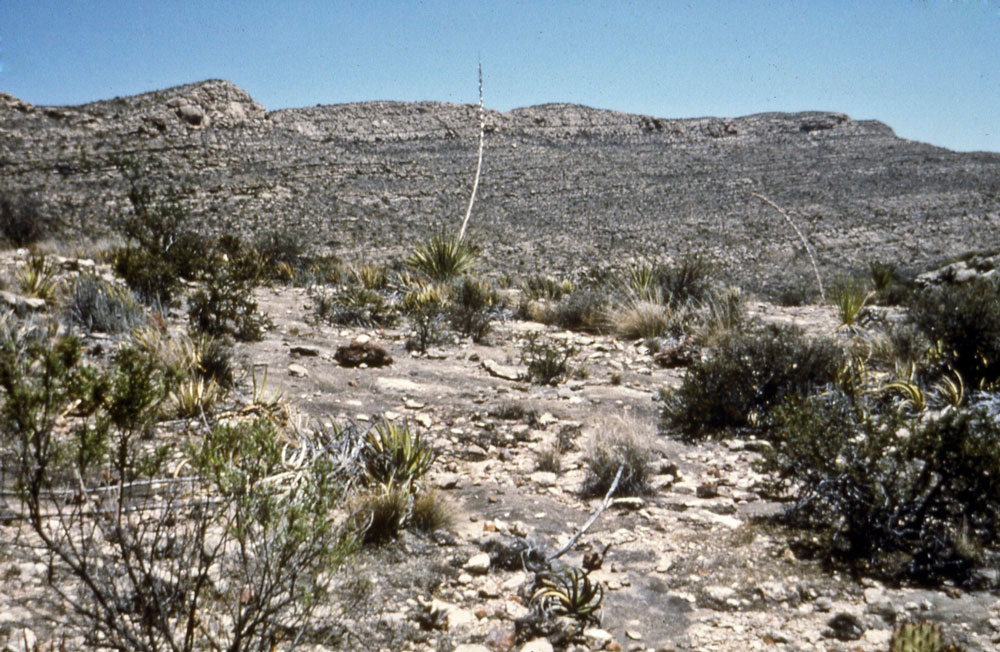Federal and State Listed Species of Texas:
Bunched cory cactus

Current
null
null
Distribution map of bunched cory cactus (Coryphantha ramillosa ssp. ramillosa).
Global Location
Bunched cory cactus is only known from West Texas in southern Brewster and Terrell counties. It also occurs across the Rio Grande in Chihuahua and Coahuila in northern Mexico.
null
Credit:
Description
Bunched cory cactus is a succulent perennial usually with solitary, unbranched stems, 3 to 9 cm tall, and usually 3 to 7 cm wide without mucilage in the stem interior. The stems are covered in spine-tipped, cone-shaped projections 6 to 20 mm long. Each projection has a groove on its upper side that extends from the tip to the base. Spines arising from each of these projections are numerous but are not so dense that they hide the stem completely. Some of the spines, called radial spines, form a ring around the tip somewhat similar to the spokes of a bicycle wheel, except the spokes are irregularly spaced and can be twisted or curving as well as straight. Other spines, central spines, arise interior to the radial spines and point somewhat outward and away from the stem. There are typically 13 to 16 radial spines, although rarely there can be as few as 9 or as many as 20 per cluster. These radial spines are typically white or gray and usually reach 1 to 2 cm long. Usually longer than the radial spines, the three to four, rarely six, straight or somewhat curved central spines vary from white to gray to dark brown. The upper central spines are between 1.7 to 3.9 cm long and the lower central spines are 2.2 to 4.3 cm long. Bunched cory cactus flowers are pink to red-purple and 3.5 to 6.5 cm long, and the outermost petals have smooth edges. The egg-shaped to round fruits are 1 to 2.5 cm long and green at maturity. The seeds are brown or yellowish to reddish.

Bunched cory cactus has spine-tipped, cone-shaped projections. Each projection has a groove on its upper side that extends from the tip to the base. In the illustration seventeen light-colored radial spines arise exterior to four longer central spines — three upper, light-colored central spines and one lower, darker-colored central spine. Bunched cory cactus can have 9 to 20 radial spines and 3 to 4 central spines.
Credit: Patrick Stark, Texas Parks & Wildlife Department
Bunched cory cactus usually has one unbranched stem and smooth not fringed flower petals.
Credit: John Waters, National Parks Service
null
Credit:
Similar Species
Big-needle pincushion cactus (Coryphantha macromeris) usually forms colonies up to 1 m across and are composed of many multi-branched individuals. Stems of big-needle pincushion cactus also have spine-tipped projections with a groove on their upper side, but the groove arises from the tip and extends half way down the projection. Flower petals of big-needle pincushion cactus are fringed not smooth. The green fruits of Texas cone cactus (Neolloydia conoidea) are less than or equal to 2.5 cm, greenish-brown or tan and dry at maturity containing black or gray seeds. See the table below for more detailed but important characteristics to differentiate between bunched cory cactus, big-needle pincushion cactus and Texas cone cactus. All measurements given are typical lengths, though measurements can rarely occur outside these. For unabridged measurements, see the Additional Information section below.
| Plant Name | Central Spine Length (cm) | Radial Spine Length (cm) | Flower Length (cm) |
| Bunched cory cactus |
1.79 to 3.9 (upper) 2.2 to 4.3 (lower) |
usually 1 to 2 | 3.5 to 6.5 |
| Big-needle pincushion cactus | 3 to 7 | usually 1.5 to 2.5 | usually 3 to 5 |
| Texas cone cactus |
0.9 to 1.7 (upper) usually 1.7 to 2.8 (lower) |
usually 0.6 to 1.2 | 2.5 to 3.2 |

Big-needle pincushion cactus can form large colonies of individuals.
Credit: Mike Powell
Texas cone cactus generally has shorter spines than bunched cory cactus.
Credit: Jackie Poole, Texas Parks & Wildlife Department
null
Credit:
null
Credit:
null
Credit:
null
Credit:
Floral Characters
nullLeaf Characters
nullnull
Credit:
null
Credit:
null
Credit:
Habitat
Rocky limestone flats, hills and mesas of the Chihuahuan Desert.

Habitat of bunched cory cactus.
Credit: Jackie Poole, Texas Parks & Wildlife Department
Life Cycle Events
Flowering occurs August to November and occasionally as early as April.
Survey Season
Although the plant is visible year-round, bunched cory cactus is most easily detected while in bloom August to November.
null
Additional Information
- Rare Plants of Texas
- U.S. Fish and Wildlife Service
- NatureServe: Coryphantha ramillosa
- NatureServe: Coryphantha ramillosa ssp. ramillosa
- Center for Plant Conservation
- Powell, A. M. and J. F. Weedin. 2004. Cacti of the Trans-Pecos and adjacent areas. Texas Tech University Press. Lubbock, TX.
- McKinney, B.R. 2000. Rare Plants, Birds, Mammals in the Trans-Pecos ecoregion of western Texas. Section 6 final report. Austin: Texas Parks & Wildlife Department.
- Westlund, B.L. 1991. Cactus trade and collection impact study. Section 6 final report. Austin: Texas Parks & Wildlife Department.
Comments
A geographically distant, yellow-flowered variant of bunched cory cactus in Mexico has been described as Coryphantha ramillosa ssp. santarosa.
Based on recent findings, the purple-flowered bunched cory cactus (Coryphantha ramillosa ssp. ramillosa) are more common than initially thought.